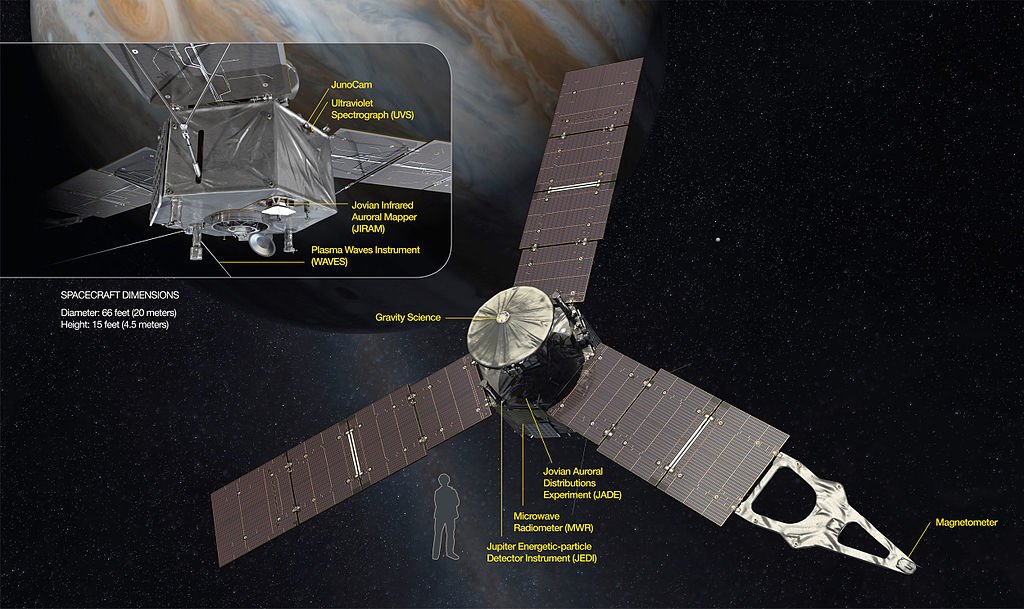A recent trio of papers published in Nature reports that information from the Juno spacecraft suggests new information about the planet Jupiter that stands in contrast to our previous theories.
Juno is a NASA spacecraft that has been orbiting around the gas giant, Jupiter, since 2016. The most famous feature of Jupiter is the Great Red Spot, but also noteworthy are the bands of light and dark clouds that make up what we can see of the planet from afar. These clouds and winds are thought to be as old as the planet itself, but until now we haven’t been able to tell what exactly lies beneath these bands that have obscured our vision of the surface for so long.
Previously, experts believed that there were two different theories as to what the surface of Jupiter looked like. One suggested that the winds extend far down towards the surface, going as deep as 10000 kilometers that were driven by heat from the depths of the planet. Other believed that these thick clouds were instead quite shallow, just occupying the first few hundred kilometers of Jupiter’s atmosphere. Recent data from Juno shows us that neither is the case.
David Stevenson, a planetary scientist at the California Institute of Technology who led the team that was studying the results from Juno’s orbit around Jupiter, stated in recently published papers that the winds extend downwards about 3000 kilometers – coming in between the two situations that were previously theorized. What’s more exciting is the data of what lies underneath, however, with Juno giving us data that atmospheric pressures 100000 times higher than those at the Earth’s surface actually strip protons and electrons from the planet’s hydrogen. These charged particles dampen the winds, and everything further down behaves as if it’s a solid body – despite being made up of fluids at Jupiter’s core.
Outside of giving us more information about Jupiter, which is significant in and of itself, Juno’s data gives us insights into the beginnings of our solar system. As perhaps the first planet to form around the sun, the inner workings regarding the nature of the planet’s core can give us greater insight into how younger planets eventually formed. The formation of planets and the makeup of Jupiter’s surface and core have been debated for many years, and until now we haven’t had a data set that gave us a concrete answer about what exactly is happening beneath those mysterious winds.
In order to take a look beneath the bands of clouds and get a better sense of what was happening closer to the surface, the team behind the Juno mission looked at the planet’s gravitational field. Essentially, the resulting force of Jupiter’s rotation around its axis should produce a perfectly symmetric “bulge” around the equator. Deviations in this bulge would give us a confirmation of complex internal structures.
The team used a large antenna from NASA’s Deep Space Network in order to connect to a special transponder located on Juno, and searched for any anomalies in the spacecraft’s trajectory. By looking at all of the known sources of acceleration for Juno, the researchers found a large asymmetry in the gravitational field of Jupiter which gave us a clear sign of material existing beneath the clouds. The data was then further analyzed in order to give us a more accurate depiction of distance – approximately 3000 kilometers below the cloud tops was the change in the field that produced charged particles.
Unfortunately, the Juno mission will soon come to an end, with the spacecraft eventually succumbing to the intense radiation from the magnetic fields on Jupiter. The mission was certainly a success, however, and gives us further insight into the inner workings of one of the first residents of our solar system.





